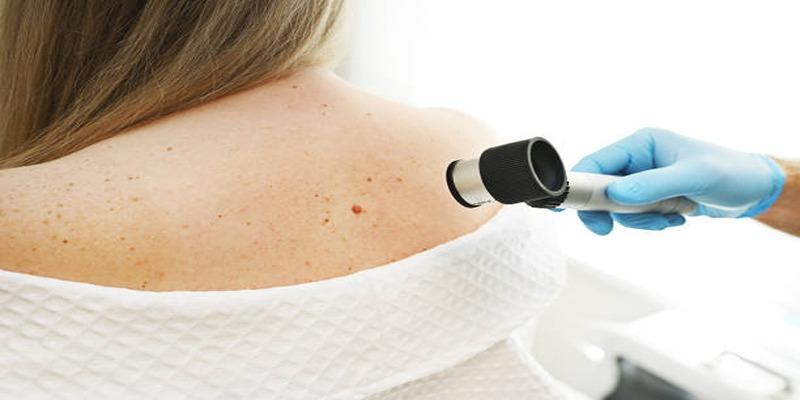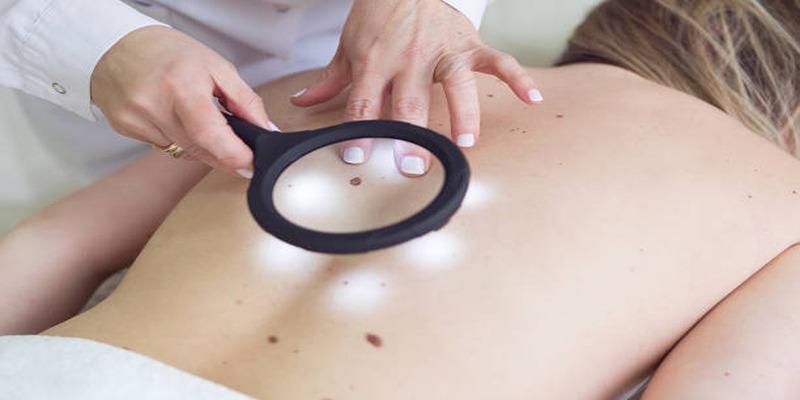Melanoma is a dangerous type of skin cancer, but its diagnosis in the early stages leads to successful treatment. People are not aware of risk factors, warning signs or prevention. In 2024, there were about 99,780 cases diagnosed in the U.S. and it claimed 7,650 lives. The rates of early detection provide a 99 percent survival rate over five years. Suspicious moles and risks awareness are the most important elements of self-protection.
Know Your Risk Factors and Take Prevention Seriously

UV Exposure Remains the Primary Culprit
The major preventable risk factor of developing melanoma is ultraviolet radiation that leads to cancers by the sun and tanning beds. Unlike most cancers, melanoma is the type that often develops with the sun damage that is accumulative. UVB and UVA rays are capable of damaging the DNA in skin cells, one with severer burns at an early age being more dangerous than the other. Regions that are not known to come into contact with sun in most cases tend to have melanoma as a result of damage that has been accumulated in the past.
Genetic and Physical Risk Factors
Melanoma is also a disease which is affected by physical characteristics and genetics. Light-skinned, pale-haired, blue-eyed individuals are at increasing risk, because of the low melanin level. Risk is also increased with greater than 50 moles or atypical moles (dysplastic nevi), as well. The presence of a family history of melanoma is a major predisposing factor as 10 percent of victims run in families with the condition. Also, compromised immune systems due to a health condition or a medication increase the risk.
Effective Prevention Strategies
Prevent melanoma with easy steps to preventative preparation. Apply sunscreen with a broad-spectrum SPF of at least 30 daily even in winter or at times of slight cloud cover because UV rays pass through any and all clouds and reflect off other surfaces such as snow, water, and sand. Resemble of the sun (10 AM- 4 PM) stay in the shade and dress in protective clothing, headwear, and eye-wear. Not only should one avoid tanning beds as a Group 1 carcinogen, but they provide an exceptionally high risk to melanoma development in people of all ages.
Learn the ABCDE Warning Signs and Monitor Your Skin

The ABCDE Method for Spot Identification
Skin self-exam is very necessary as early detection of melanoma is paramount to a good treatment. The ABCDE technique offers an easy to follow guideline to pinpointing problem areas:
A - Asymmetry: The normal moles are usually round and symmetrical. If when you make a line down the center of a mole and allowed half of the mole to disappear, the other half would then appear different, then this asymmetrical quality is indicative of melanoma.
B - Border: The borders of melanomas are usually scalloped, poorly defined or irregular. Typical moles tend to have smooth edges that visibly draw the line between the mole and the rest of the skin.
C - Color: Whereas normal moles have only one color which is brown or dark brown, the melanoma has multi colored appearance of brown, black, red, white, or blue color.
D - Diameter: Most melanomas are greater than 6 millimeters (approximately the size of a pencil eraser) in diameter when they are discovered although some may be smaller at the time of their discovery.
E - Evolving: More importantly, be aware of any changes to existing moles or appearing of new ones, after the age of 30. Alterations in size, shape, color, elevation or symptoms such as itching and bleeding should be referred to the physician at once.
Conducting Effective Self-Examinations
Consider monthly self-exam of the skin in a well-lighted room using either a full-length mirror and a hand mirror to examine areas that cannot be seen easily. Inspect your body carefully systematically- including your scalp, between your fingers and toes, and on the soles of your feet. The incidence of melanoma appears everywhere on the body and not just on sun-exposed parts of your skin.
Photograph any moles or other spots that are of concern. This will form a comparison baseline in the future examinations. Pay special attention to changes and contact a dermatologist should any of them occur.
Understand Treatment Options and the Importance of Early Action
Surgical Treatment Remains the Gold Standard
At early stages the surgical removal provides the highest chances of curing the melanoma. The standard therapy is the wide local excision where the melanoma and a healthy margin around it is removed by the surgeon. This margin is dependent on the thickness of the melanoma; the thicker the melanoma the wider the margin should be in order to completely remove the melanoma.
With very early melanomas (melanoma in situ or very thin invasive melanomas), this surgical excision is all that is needed. The prognosis of these early-stage melanomas is extremely high (five-year survival is close to 100 percent), which explains why the early detection is so important.
Advanced Treatment Options
Once the melanoma has metastasized to other locations, other treatment options are required. Sentinel lymph node biopsy is used to assist in investigating whether adjacent lymph nodes are infected by cancer. In case melanoma has spread to lymph nodes or other body organs, treatment choices can be:
In the last decades, immunotherapy has transformed the field of melanoma treatment. Companies People Products Keytruda (pembrolizumab)Opdivo (nivolumab) The advanced melanoma patients have markedly benefited out of these forms of treatment.
Targeted therapy medicines inhibit the growth of melanoma by interfering with specific proteins that spur growth. In those patients whose tumors possess specific form of genetic mutation (such as the BRAF mutation), targeted medication may work quite well in management of the disease.
The Critical Role of Staging and Prognosis
The degree of cancer metastasis defines staging in melanoma; this informs therapy decisions. Melanoma in situ (Stage 0) has an excellent prognosis and Stage IV melanoma has high-stakes issues. Nevertheless, even the treatment of advanced melanoma has now been enhanced significantly by the advent of newer immunotherapy and targeted therapy.
The original thickness of the melanoma (Breslow depth) and whether it has spread to other neuropathies (e.g., to lymph nodes or to distant locations) are of key significance to prognosis. This knowledge allows the doctors to make an informed decision with the patient on the aggressiveness of treatment and follow up care.
Final Thoughts
Information on melanoma is a life-saving idea Make regular dermatologist appointments once a year particularly in case you are at risk like Fair skin or family history of skin cancer. Carry out regular self-tests with the ABCDE method, sunscreen on a daily basis, avoid the use of tanning beds, and use shade when UV is the strongest. Early preventive care is a very important aspect in safeguarding your skin health.












